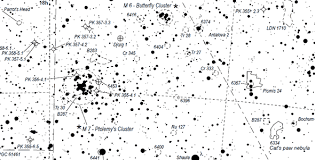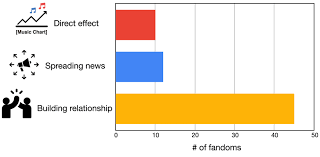Exploring the Universe: Star Maps and Atlases
Stargazing has captivated humanity for centuries, offering a glimpse into the vast expanse of the cosmos. One essential tool for any aspiring astronomer or casual observer is a star map or atlas. These intricate guides unlock the mysteries of the night sky, helping us navigate constellations, planets, and distant galaxies.
The Art of Cartography
Star maps are more than just practical tools; they are works of art that blend science and creativity. Skilled cartographers painstakingly plot the positions of stars and celestial bodies onto intricate grids, creating detailed representations of the night sky. These maps often feature beautiful illustrations of constellations, adding a touch of wonder to our astronomical pursuits.
Navigating the Night Sky
Whether you’re a seasoned astronomer or a novice stargazer, a star map or atlas can enhance your celestial observations. By referencing these guides, you can identify key stars and planets, track the movements of celestial bodies, and even plan your own stargazing adventures. With the aid of a reliable map, the night sky becomes a canvas waiting to be explored.
Unveiling Hidden Treasures
Star maps and atlases also serve as gateways to hidden treasures in the universe. By following their coordinates and guidance, you can discover elusive nebulae, distant star clusters, and other celestial wonders that might otherwise go unnoticed. These tools open up new realms of exploration for astronomers seeking to uncover the secrets of our galaxy.
Embracing Wonder and Curiosity
At their core, star maps and atlases inspire wonder and curiosity about the universe. They remind us of our place in the cosmos and ignite a sense of awe at the sheer scale and beauty of space. Whether used for scientific research or simply for contemplative stargazing, these tools invite us to explore beyond our earthly confines and reach for the stars.
Exploring the Heavens: A Guide to Star Maps and Atlases – Understanding, Creation, and Usage
- What is a star map and atlas?
- How are star maps and atlases created?
- What information can I find in a star map or atlas?
- Are there different types of star maps available?
- How do I use a star map to navigate the night sky?
- Where can I purchase a reliable star map or atlas?
- Can star maps help me locate specific constellations or planets?
What is a star map and atlas?
A star map and atlas are essential tools for navigating the night sky and identifying celestial objects such as stars, planets, and constellations. A star map typically consists of a detailed chart that displays the positions of stars and other celestial bodies relative to Earth. On the other hand, an atlas is a comprehensive collection of maps that provide a broader overview of the entire sky, often including additional information on deep-sky objects, galaxies, and nebulae. Together, these resources serve as guides for astronomers and stargazers alike, enabling them to explore the wonders of the universe with precision and clarity.
How are star maps and atlases created?
Creating star maps and atlases is a meticulous process that combines scientific precision with artistic flair. Skilled cartographers and astronomers collaborate to gather data on the positions of stars, planets, and other celestial objects using telescopes and astronomical observations. This information is then meticulously plotted onto a grid system, taking into account factors such as celestial coordinates and magnitudes. The intricate illustrations of constellations and celestial features are often hand-drawn to add a touch of beauty to the functional aspect of the maps. Advanced software tools are also employed to ensure accuracy and detail in representing the vast expanse of the night sky. The result is a stunning visual representation of the cosmos that not only aids in navigation but also sparks wonder and curiosity about the mysteries of the universe.
What information can I find in a star map or atlas?
In a star map or atlas, you can expect to find a wealth of information that will enrich your stargazing experience. These guides typically include detailed representations of constellations, stars, planets, and other celestial objects visible in the night sky. You can identify key stars by their names and brightness levels, track the paths of planets across the heavens, and locate fascinating deep-sky objects such as nebulae and galaxies. Additionally, star maps often provide helpful tips on observing conditions, astronomical events like meteor showers or eclipses, and guidance on how to use the map effectively to navigate the vast cosmos above. With a star map or atlas in hand, you can embark on a journey of discovery through the wonders of the universe.
Are there different types of star maps available?
When it comes to star maps and atlases, there is a diverse range of options available to cater to varying needs and preferences. From simple handheld planispheres that display the night sky for a specific time and date to detailed celestial atlases that provide comprehensive charts of stars, galaxies, and constellations, enthusiasts have a plethora of choices at their disposal. Additionally, digital star map apps have become increasingly popular, offering interactive features and real-time updates for stargazers on the go. Whether you prefer traditional paper maps for a tactile experience or digital tools for convenience, there is a type of star map or atlas to suit every stargazing adventure.
How do I use a star map to navigate the night sky?
Navigating the night sky using a star map is a fascinating journey that blends science with a sense of wonder. To use a star map effectively, begin by familiarising yourself with the layout of the map and understanding its key features such as constellations, stars, and planets. Choose a clear night with minimal light pollution for optimal visibility. Align the map with the direction you are facing, matching up the cardinal points to ensure accuracy. Identify prominent stars or constellations in the sky and use the map to locate their positions relative to each other. By following these steps and regularly consulting your star map, you can confidently navigate the celestial realm and unlock the mysteries of the cosmos above.
Where can I purchase a reliable star map or atlas?
For those seeking a reliable star map or atlas to aid in their celestial explorations, there are various reputable sources where these essential tools can be purchased. Specialised astronomy stores, both online and physical, offer a wide selection of star maps and atlases curated by experts in the field. Additionally, major bookstores often carry a range of astronomy publications that include detailed star charts and guides to the night sky. For those who prefer digital formats, reputable websites and online platforms dedicated to astronomy provide downloadable versions of star maps and atlases for convenient access. Whether you’re a seasoned astronomer or a beginner looking to delve into the wonders of the cosmos, these trusted sources ensure that you can acquire a reliable guide to navigate the stars with confidence and clarity.
Can star maps help me locate specific constellations or planets?
Star maps are invaluable tools for locating specific constellations or planets in the night sky. By referencing a detailed star map or atlas, individuals can easily identify the positions of various celestial bodies and navigate the vast expanse of space above them. Whether you’re searching for a particular constellation to admire its beauty or aiming to spot a specific planet like Mars or Jupiter, a well-crafted star map provides the guidance needed to pinpoint these stellar wonders. With the aid of star maps, stargazers can enhance their astronomical experiences and deepen their understanding of the celestial realm.




